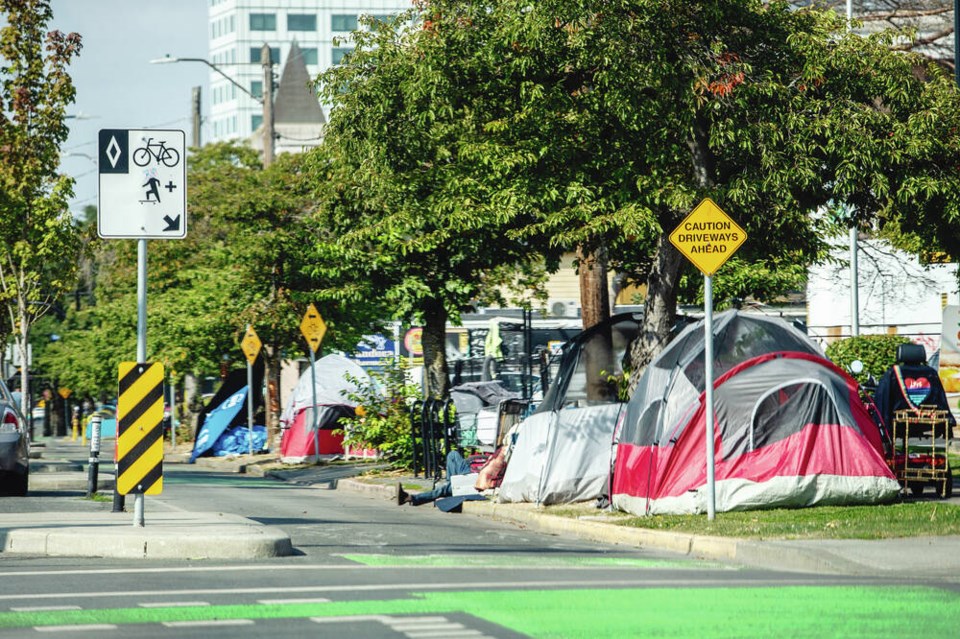With his gift for memorable phrasings, the Rev. Martin Luther King Jr. observed: “We are tied together in the single garment of destiny, caught in an inescapable network of mutuality.”
He also remarked: “For some strange reason I can never be what I ought to be until you are what you ought to be.”
Many others support this notion of our interconnectedness. For example, guru of systems thinking Margaret Wheatley maintains that we tend to “divide the world into pieces, rather than explore its web-like nature.”
Moreover, in the 19th century, Chief Seattle commented: “Whatever we do to the web, we do to ourselves.”
These complementary views provide a useful lens through which to consider the seemingly intractable problem of homelessness, complicated by personal challenges, mental health issues, self-medication and addiction.
To what extent are families of origin a factor in the often deeply entangled predicaments of the homeless?
In 2009, a local doctor wrote: “After practising pediatrics for over 30 years, I am convinced that the vast majority of us grew up in more or less dysfunctional families and that the majority of us, as adults, remain emotionally wounded and suffer from varying degrees of low self-esteem and low self-worth.”
In his recent columns on community safety, Trevor Hancock, a public health and social policy specialist, pointed out, based on recent information from Statistics sa国际传媒, that “one-quarter of victims of police-reported violence are victimized by a family member” and that “two-thirds of all victims of family violence” are women and girls.
He added that “many assaults are either domestic/intimate partner violence or sexual violence … and 80 per cent or more of such crimes are not reported to the police.”
Ideally, families should be chalices in which their members are held safely, supported and encouraged, given ample room for exploration and expression within a framework of clear boundaries, but too often families are instead crucibles in which the most profound result is wounding rather than nurturing.
According to Wheatley: “If others are struggling, we experience the consequences of their struggle. If others don’t feel safe, we aren’t safe.”
The American author David Spangler set a helpful and high parenting standard when he wrote in 1998 that “the most important work that a parent does takes place in intangible realms — realms of love, of forgiveness and faith, of caring and listening. My children are more than their bodies, and if all I do is feed them, clothe them, and keep them physically well, I am only partly fostering. It is in the invisible realm of spirit, mind, and emotion that much of my parenting takes place.”
But if parents have not experienced or had this level of parenting modelled for them, it is generally not realistic to expect that they will achieve it for themselves and their children.
Drawing on the work of different experts, Hancock emphasizes that it is important to be “tough on causes” as well as tough on crime.
Noting the Canadian Municipal Network on Crime Prevention’s statement that “Solid prevention science identifies actions where violent crime has been reduced by 50 per cent better than the status quo,” Hancock lists five “scientifically proven prevention programs”:
• engaging and supporting young males;
• supporting positive parenting and early childhood;
• strengthening anti-violence social norms;
• mitigating financial stress; and
• improving the physical environment.
While all five actions are important, the second is especially far-seeing. Hancock advocates beginning to address these five areas by creating “some form of permanent community safety and crime prevention council, which in our case should be regional.”
Decades ago, I knew a woman who grew up on an Alberta farm in the 1910s and ‘20s. She said that all the children she knew, despite their varied circumstances, “brought their heels with them” as they grew up.
This view represents the laissez-faire philosophy of child-rearing of that time and place. Compared with Spangler’s high parenting standard, this philosophy set the bar low.
While this is a judgment, what it really says to me is that there is limited value in scorning earlier generations for acting in accordance with the ethos of their era and their individual situations and knowledge.
Moving ahead to 1964, consider the perspective of troubadour Bob Dylan who ran away from home repeatedly until he left for good at 18.
“I kept running away because I wasn’t free,” he explained when he was 23. “Somehow, way back then, I already knew that parents do what they do because they’re … concerned with their kids in relation to themselves … They want you to be what they want you to be. So I started running away when I was 10.”
Dylan, with his gifts, made out OK. But others, then and later, affected by dysfunctional families, weren’t so fortunate. Recognizing that families, for myriad reasons, are generally less than ideal, it makes sense that society provide backup ways to teach life skills ranging from financial literacy to respectful relationships to the building blocks of self-esteem.
Creating parallel approaches for developing these vital life skills is a preventative strategy to avoid or reduce downstream problems and, as Hancock has noted, will save money over time.
When Hancock began his Sept. 25 column with the truism that “it takes a whole village to raise a child, not just the family and the school,” he was effectively invoking life’s web and King’s “inescapable network of mutuality.”
>>> To comment on this article, write a letter to the editor: [email protected]



